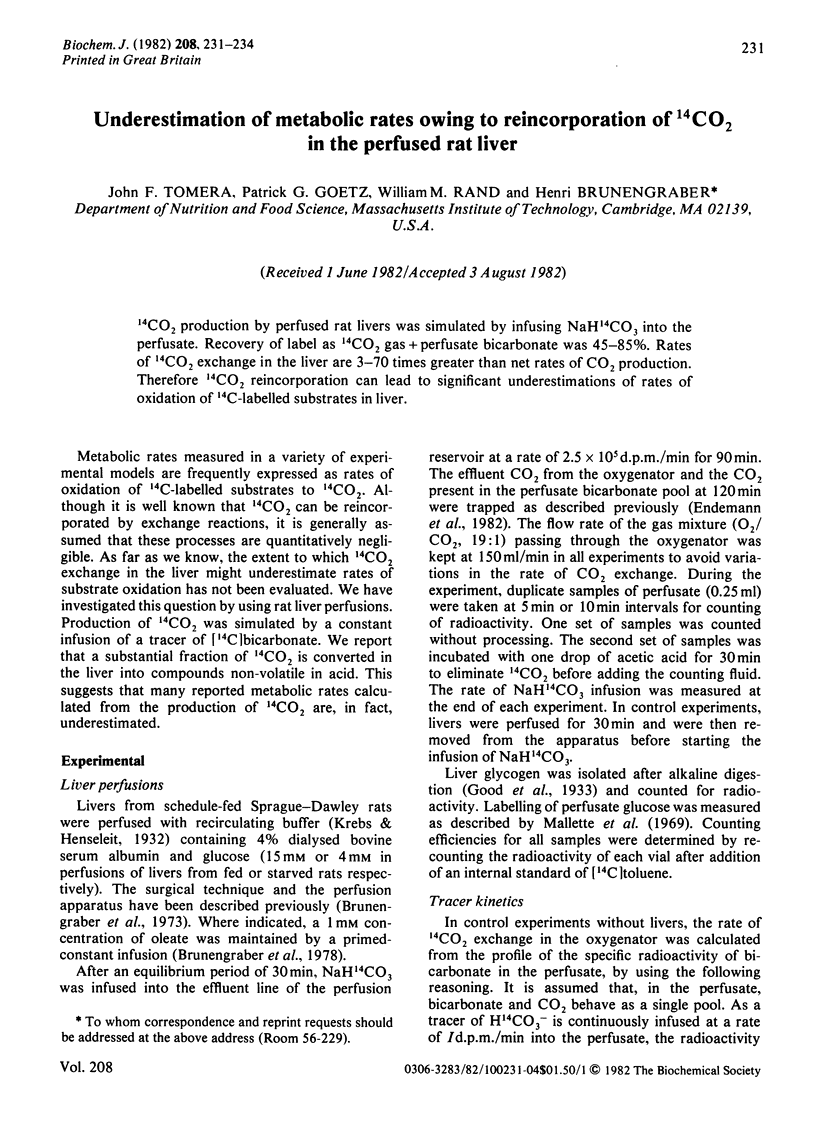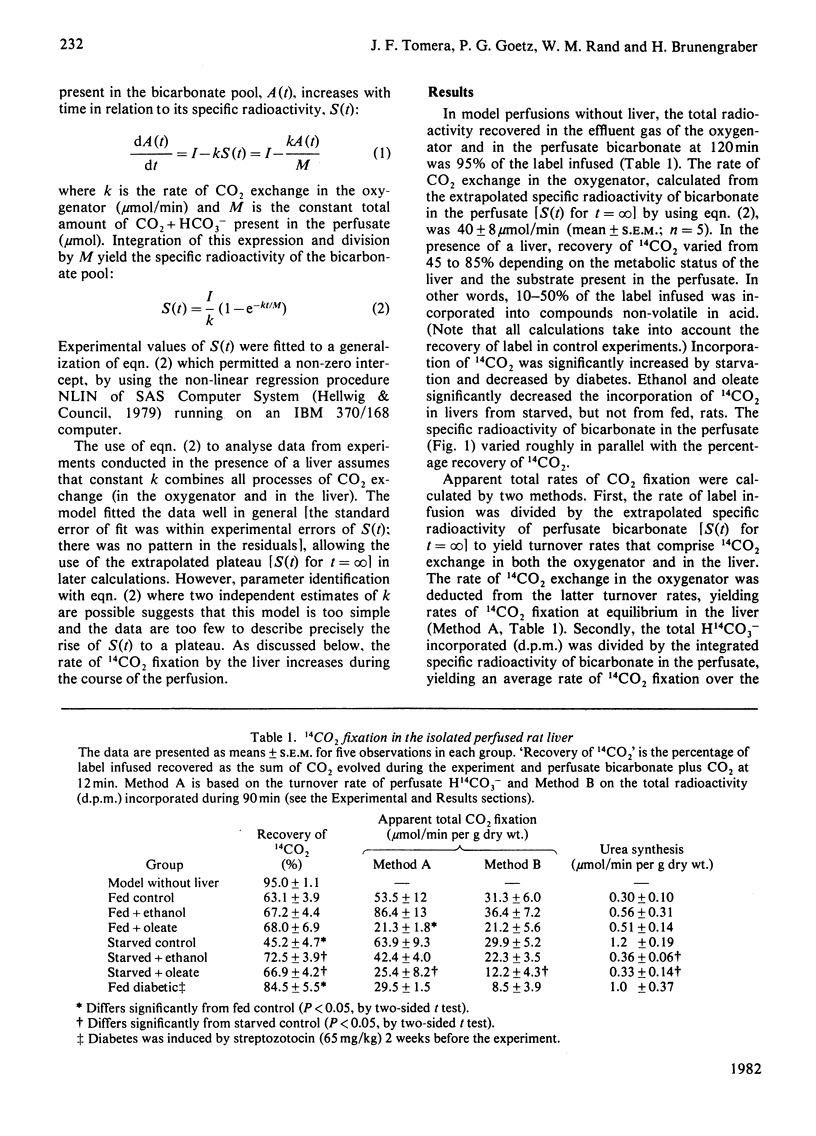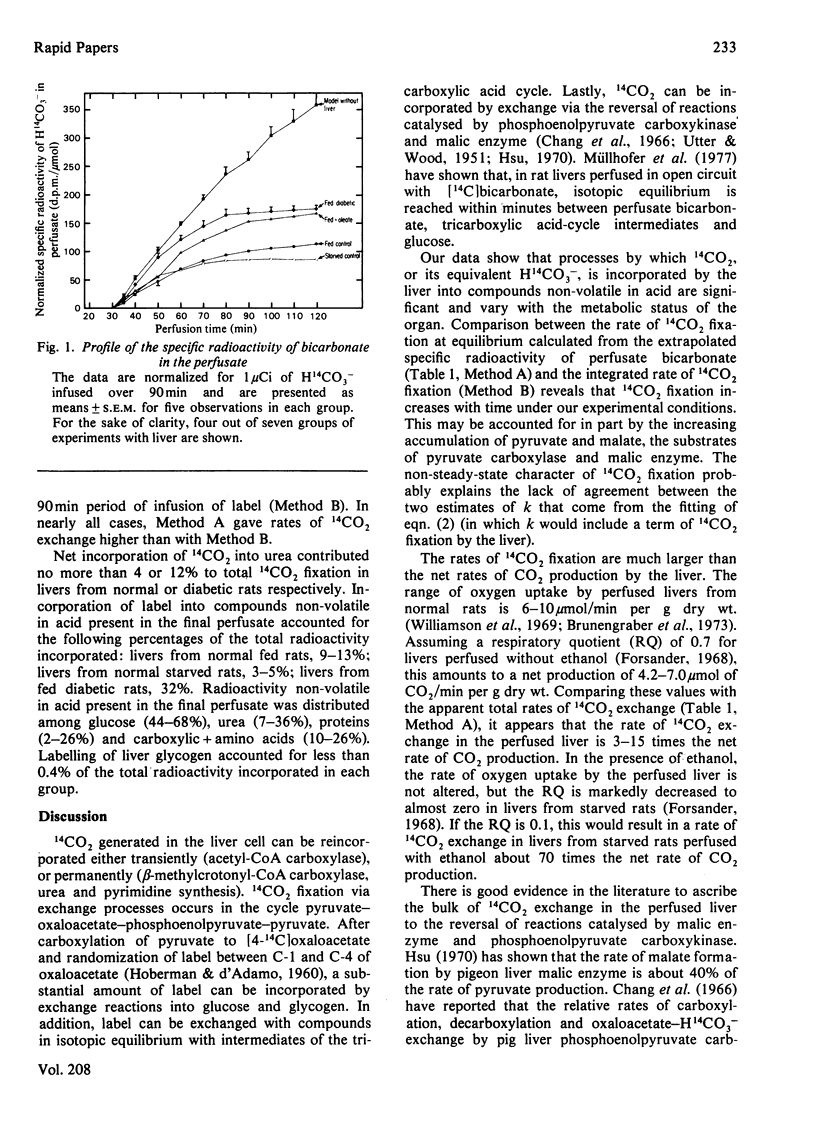Abstract
14CO2 production by perfused rat livers was simulated by infusing NaH14CO3 into the perfusate. Recovery of label as 14CO2 gas + perfusate bicarbonate was 45–85%. Rates of 14CO2 exchange in the liver are 3–70 times greater than net rates of CO2 production. Therefore 14CO2 reincorporation can lead to significant underestimations of rates of oxidation of 14C-labelled substrates in liver.
Full text
PDF



Selected References
These references are in PubMed. This may not be the complete list of references from this article.
- Brinkworth R. I., Hanson R. W., Fullin F. A., Schramm V. L. Mn2+-sensitive and -insensitive forms of phosphoenolpyruvate carboxykinase (GTP). J Biol Chem. 1981 Nov 10;256(21):10795–10802. [PubMed] [Google Scholar]
- Brunengraber H., Boutry M., Lowenstein J. M. Fatty acid and 3- -hydroxysterol synthesis in the perfused rat liver. Including measurements on the production of lactate, pyruvate, -hydroxy-butyrate, and acetoacetate by the fed liver. J Biol Chem. 1973 Apr 25;248(8):2656–2669. [PubMed] [Google Scholar]
- Brunengraber H., Boutry M., Lowenstein J. M. Fatty acid, 3-beta-hydroxysterol, and ketone synthesis in the perfused rat liver. Effects of (--)-hydroxycitrate and oleate. Eur J Biochem. 1978 Jan 16;82(2):373–384. doi: 10.1111/j.1432-1033.1978.tb12032.x. [DOI] [PubMed] [Google Scholar]
- Chang H. C., Maruyama H., Miller R. S., Lane M. D. The enzymatic carboxylation of phosphoenolpyruvate. 3. Investigation of the kinetics and mechanism of the mitochondrial phosphoenolpyruvate carboxykinase-catalyzed reaction. J Biol Chem. 1966 May 25;241(10):2421–2430. [PubMed] [Google Scholar]
- Colombo G., Carlson G. M., Lardy H. A. Phosphoenolpyruvate carboxykinase (guanosine triphosphate) from rat liver cytosol. Separation of homogeneous forms of the enzyme with high and low activity by chromatography on agarose-hexane-guanosine triphosphate. Biochemistry. 1978 Dec 12;17(25):5321–5329. doi: 10.1021/bi00618a001. [DOI] [PubMed] [Google Scholar]
- Endemann G., Goetz P. G., Edmond J., Brunengraber H. Lipogenesis from ketone bodies in the isolated perfused rat liver. Evidence for the cytosolic activation of acetoacetate. J Biol Chem. 1982 Apr 10;257(7):3434–3440. [PubMed] [Google Scholar]
- HOBERMAN H. D., D'ADAMO A. F., Jr Synthesis of liver glycogen from 3-C14-DL-malate: evidence for complete isotopic equilibration of C4-dicarboxylic acids. J Biol Chem. 1960 Apr;235:934–936. [PubMed] [Google Scholar]
- Hsu R. Y. Mechanism of pigeon liver malic enzyme. Formation of L-lactate from L-malate, and effects of modification of protein thiol groups on malic enzyme, oxalacetate, and pyruvate reductase activities. J Biol Chem. 1970 Dec 25;245(24):6675–6682. [PubMed] [Google Scholar]
- Mallet L. E., Exton J. H., Park C. R. Control of gluconeogenesis from amino acids in the perfused rat liver. J Biol Chem. 1969 Oct 25;244(20):5713–5723. [PubMed] [Google Scholar]
- Müllhofer G., Müller C., Von Stetten C., Gruber E. Carbon-14 tracer studies in the metabolism of isolated rat-liver parenchymal cells under conditions of gluconeogenesis from lactate and pyruvate. Eur J Biochem. 1977 May 16;75(2):331–341. doi: 10.1111/j.1432-1033.1977.tb11533.x. [DOI] [PubMed] [Google Scholar]
- UTTER M. F., WOOD H. G. Mechanisms of fixation of carbon dioxide by heterotrophes and autotrophs. Adv Enzymol Relat Subj Biochem. 1951;12:41–151. doi: 10.1002/9780470122570.ch2. [DOI] [PubMed] [Google Scholar]
- Williamson J. R., Scholz R., Browning E. T. Control mechanisms of gluconeogenesis and ketogenesis. II. Interactions between fatty acid oxidation and the citric acid cycle in perfused rat liver. J Biol Chem. 1969 Sep 10;244(17):4617–4627. [PubMed] [Google Scholar]


